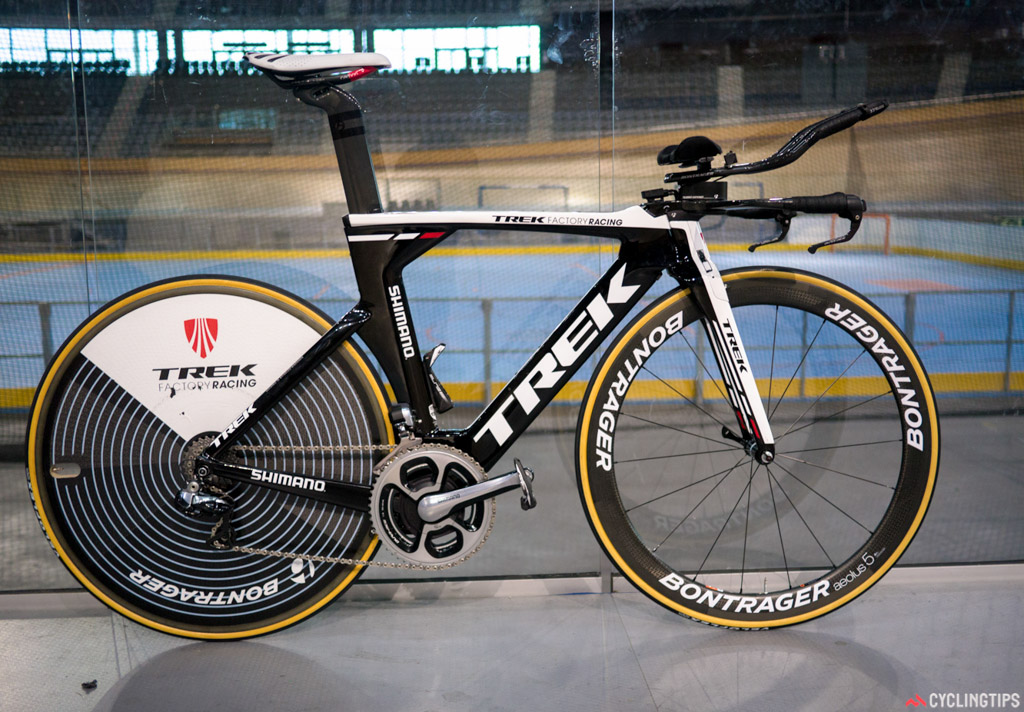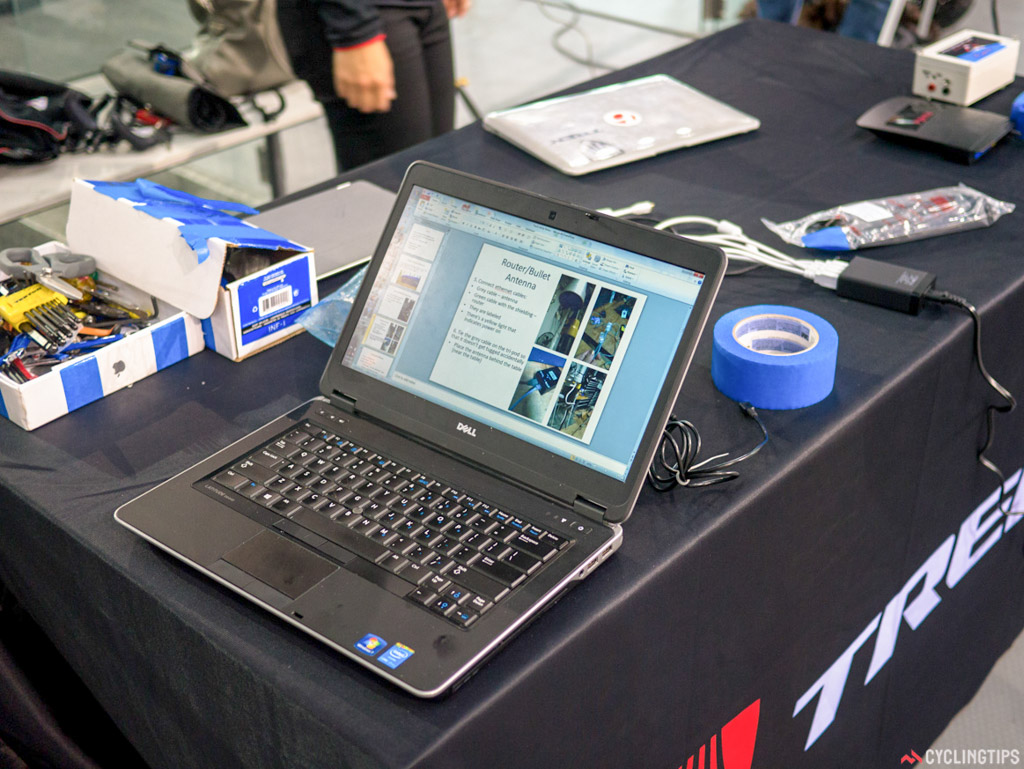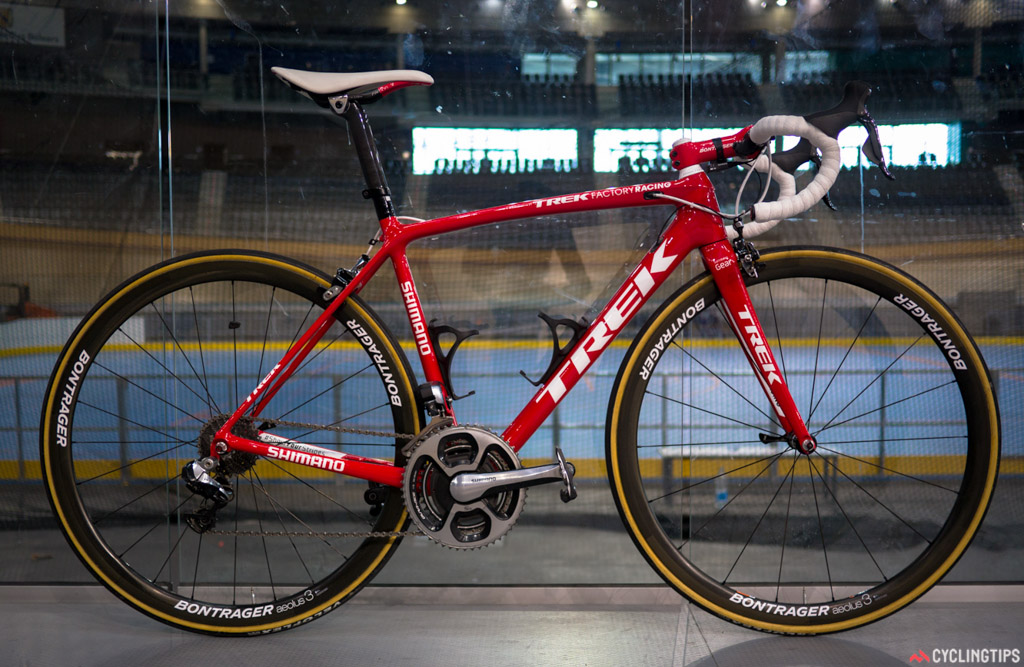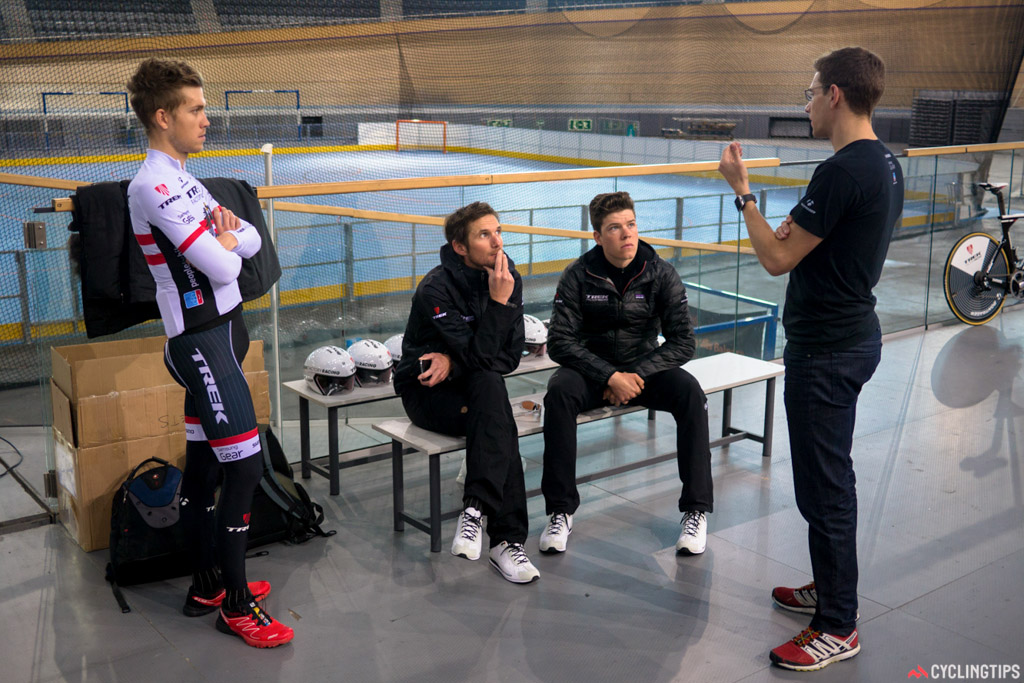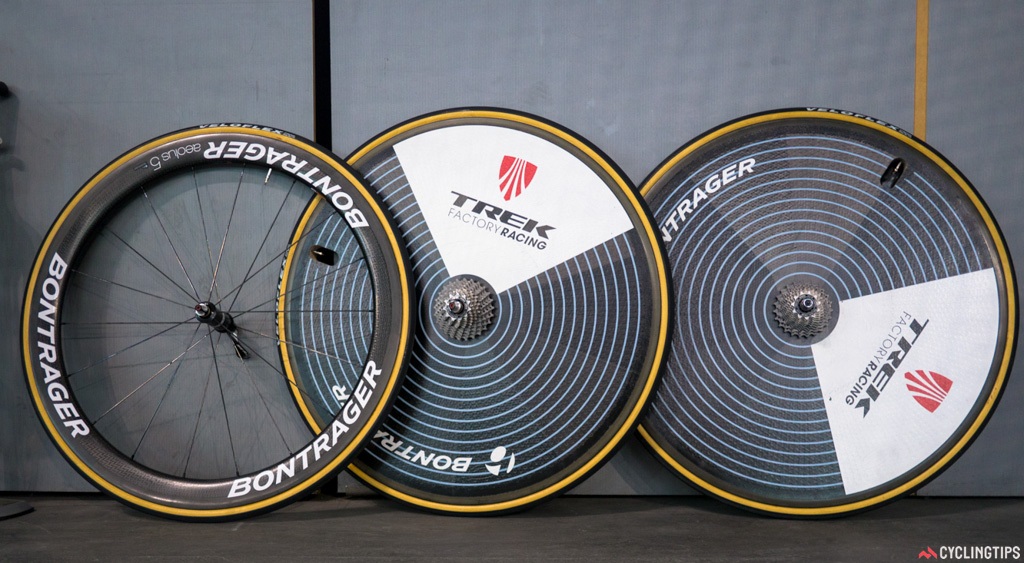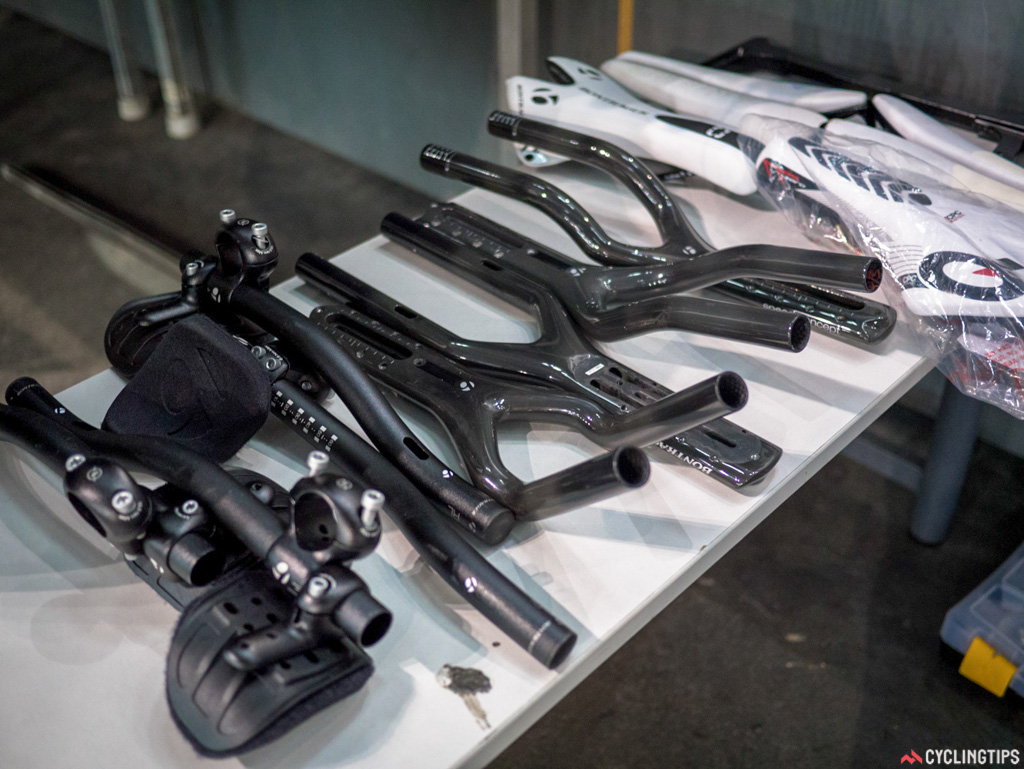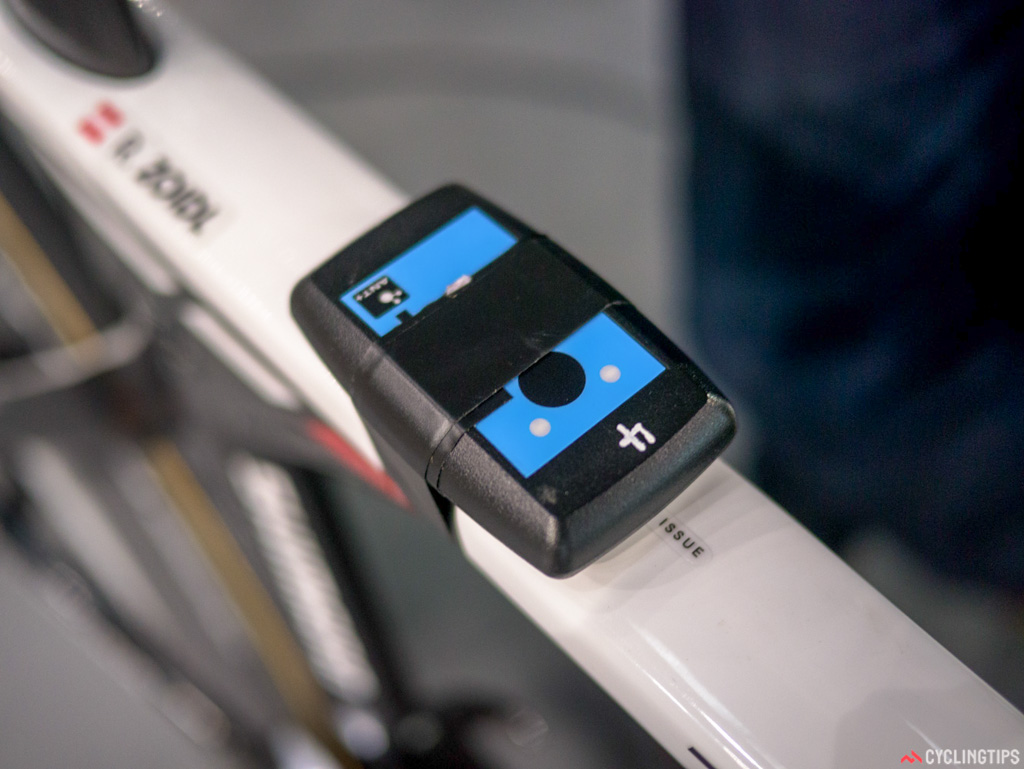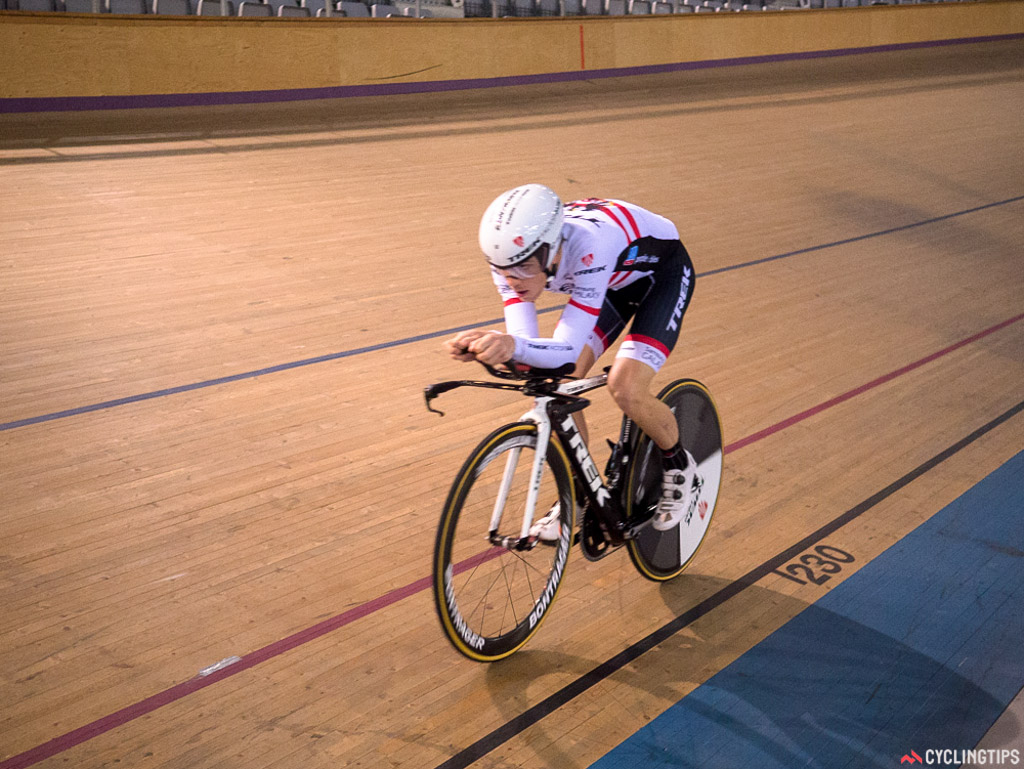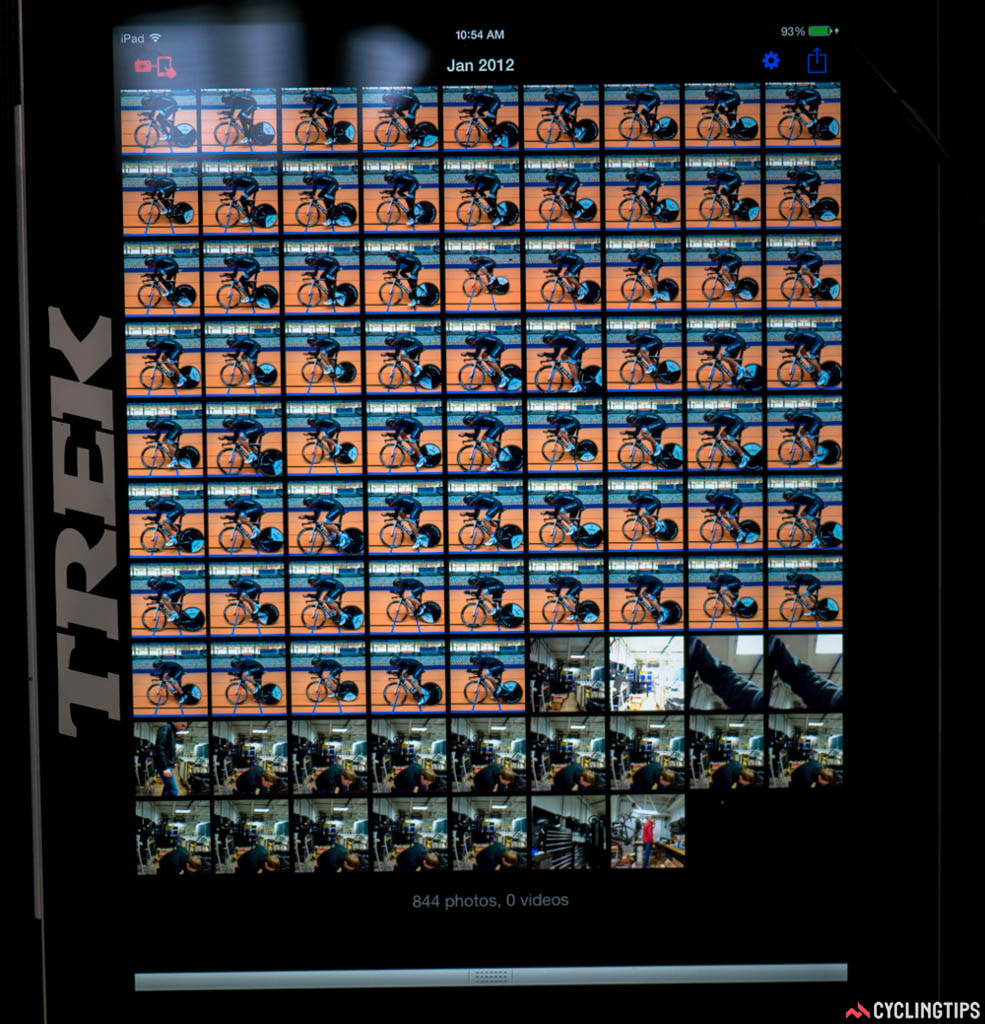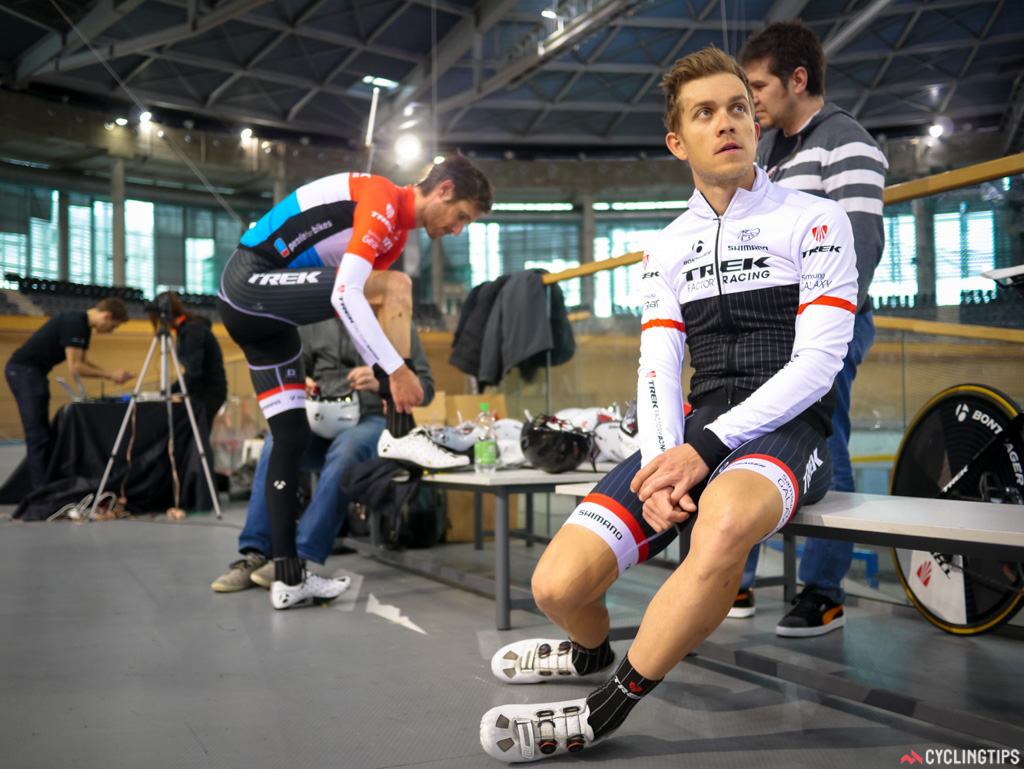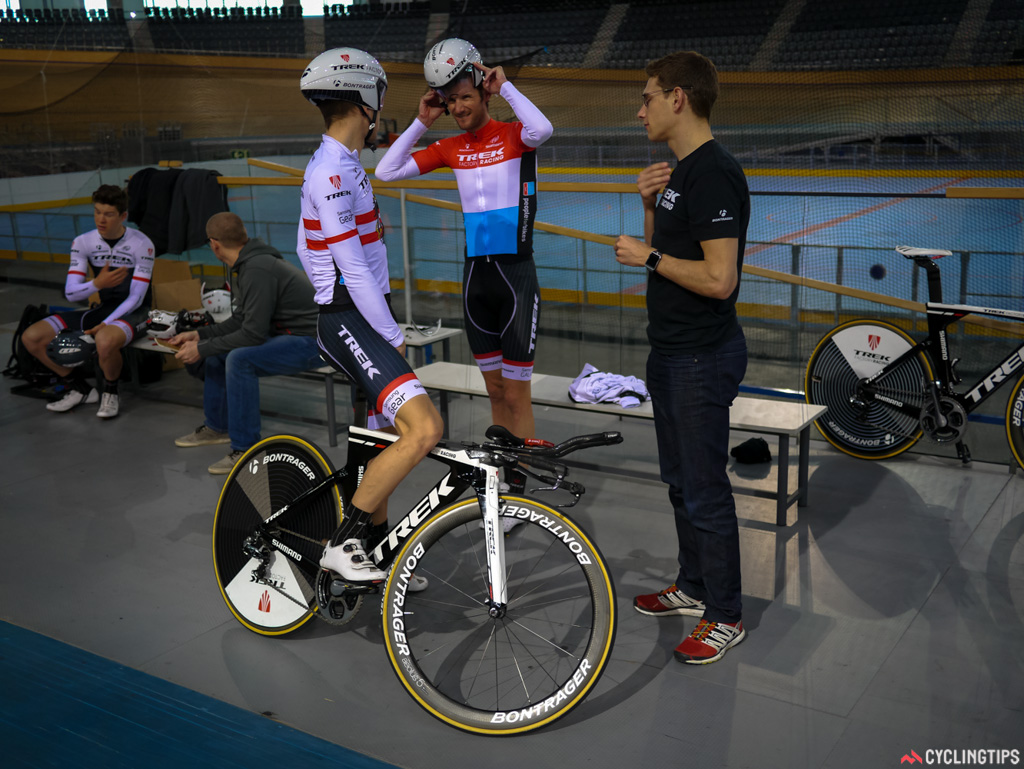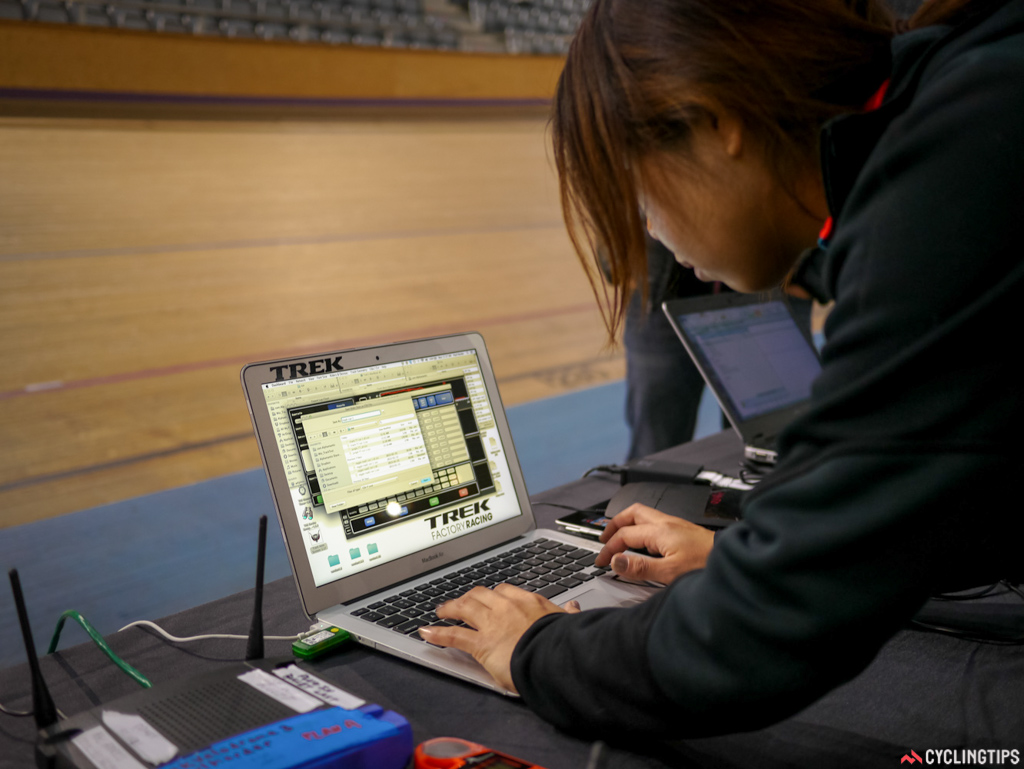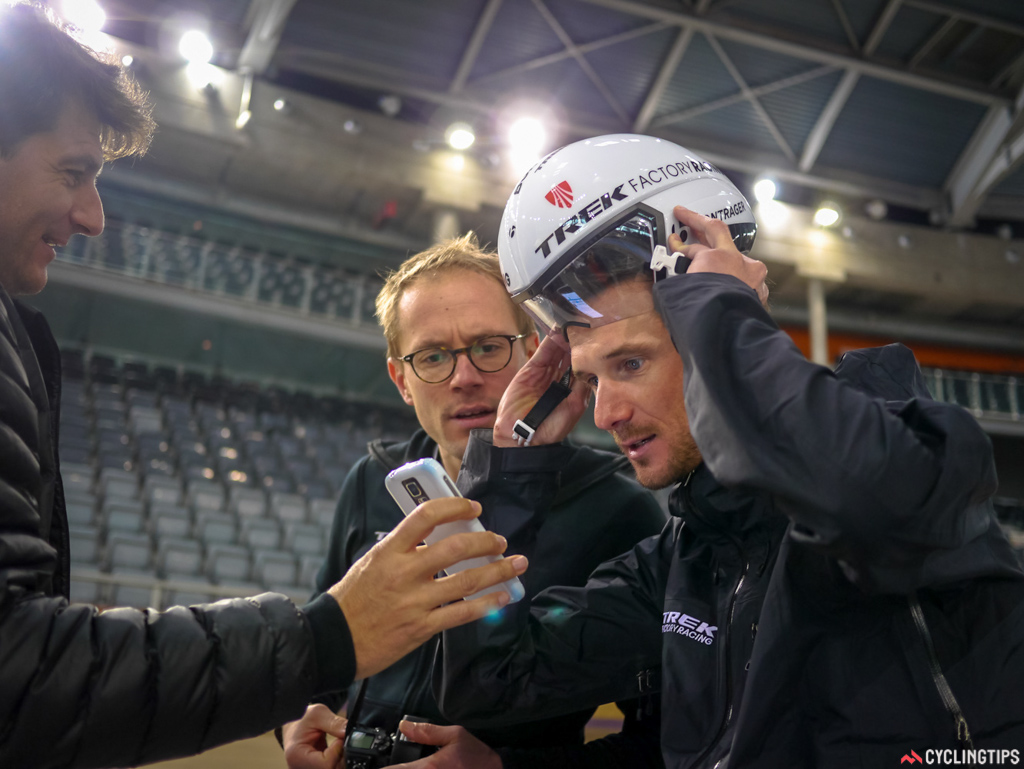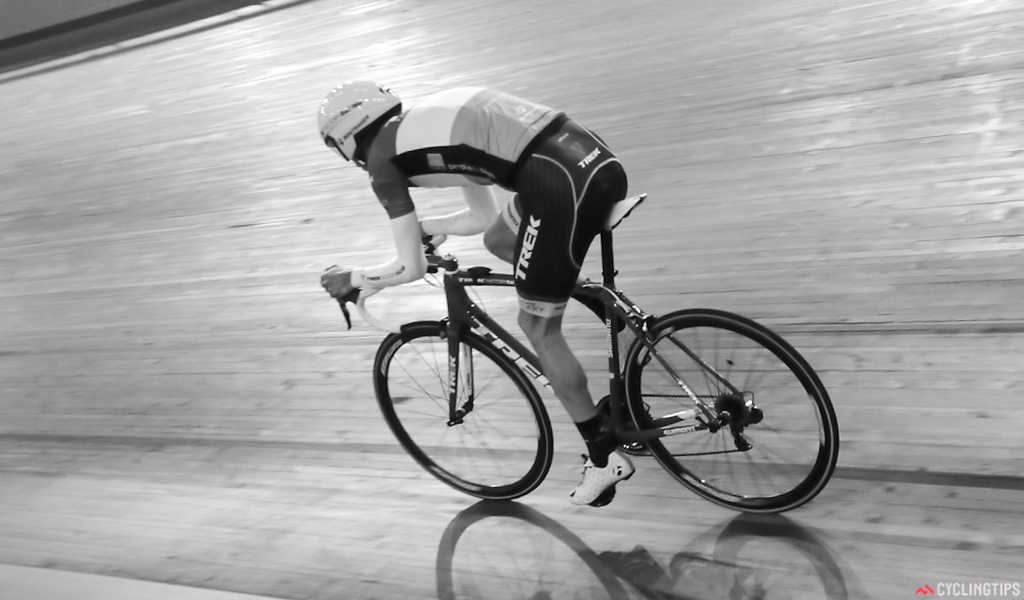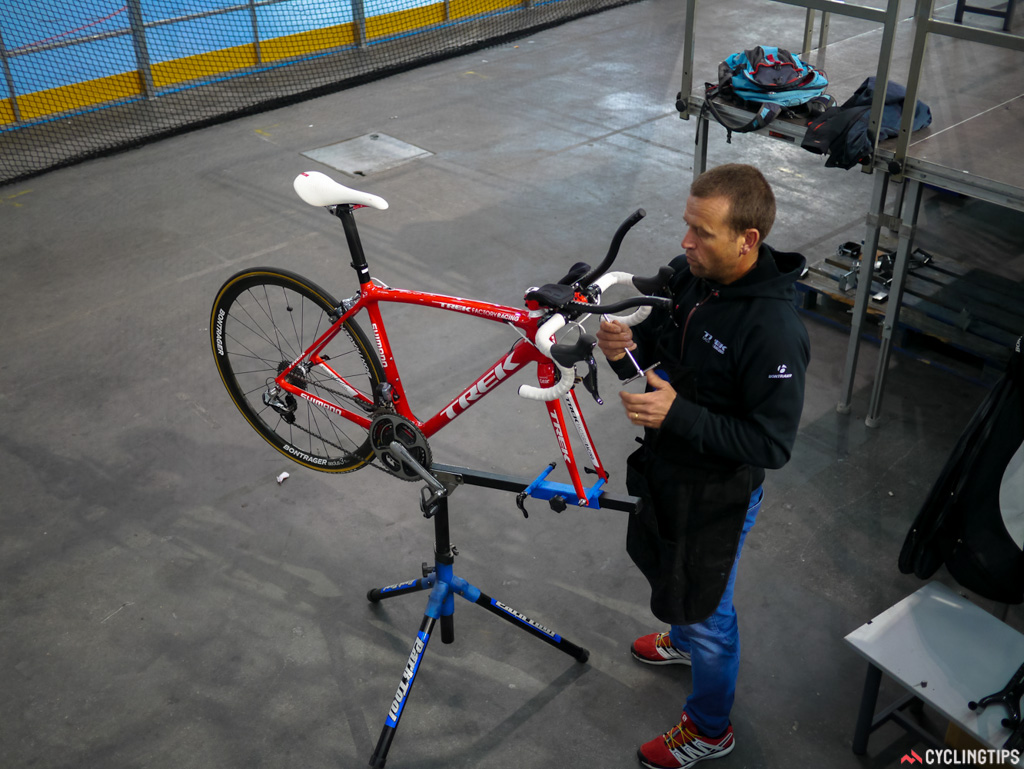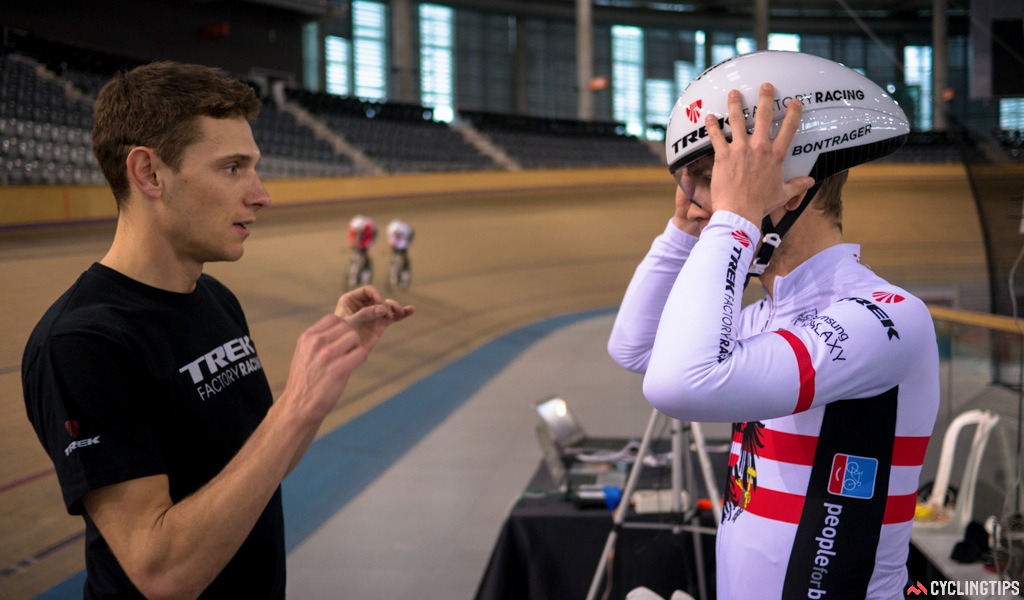The 2015 edition of Paris-Nice is currently in progress with the race set to finish on Sunday with an individual time trial up the Col d’Eze just outside of Nice. That final stage will almost certainly decide the race overall so it makes sense that teams have been preparing specifically for it.
But doing that preparation on a velodrome mightn’t seem to make much sense, and yet that’s exactly where Trek Factory Racing took three of its top riders ahead of the race. CyclingTips’ roving reporter Dave Everett went along to see how the day unfolded.
The seventh and final stage of this year’s Paris-Nice is the climb of the Col d’Eze. It’s seen action in various editions of the French stage race since 1968, most recently in 2013 when Richie Porte took the stage win and cemented his overall victory.
At 9.6km long the Col d’Eze climb isn’t up there with the mammoth mountains that the sport tackles in the heart of the Alps, Pyrenees or Dolomites but it’s a decisive climb, particularly given it falls on the last day of the race. The climb has an average gradient of 4.7% and rises 501 meters over its 9.6km. It’s a far cry from what a velodrome has to offer so why would a team take its riders for an expensive and intense session in one of the world’s leading indoor velodromes to prepare for it?
Back when several members of Trek Factory Racing were thrashing it out at the Santos Tour Down Under, the majority of the team was in Mallorca. Mallorca manages to cater to pro cycling teams and keen amateurs alike, offering pretty much everything that is needed for a successful training block: quiet roads, mountains, (usually) good weather and a world-class indoor velodrome.
The velodrome at Palma — Mallorca’s biggest city — has a reputation for being particularly fast. Indeed, until he changed his mind, Bradley Wiggins was going to tackle the hour record there (he’ll now be on home turf at the London Olympic track in Lee Valley). The 250-metre Siberian pine-surfaced track at Palma hosted the World Championships in 2007 and for one day in January 2015 it was ground zero for working out how best to prepare three Trek riders for a mountain time trial.
On hand to help the three riders perform to their best and achieve the day’s target were several team staff, some of Trek’s engineers, Jordan Roessingh, the team’s technical manager, three members from Bontrager’s helmet devision and mechanical design department, plus team mechanics and a soigneur.
The overriding aim for the day’s track session was to determine which set up each of the riders — Bob Jungels, Riccardo Zoidl and Frank Schleck — will be best off using when they line up to tackle the Col d’Eze. Each rider had with them their time trial bike and their standard road bike plus multiple wheels, clip-on aero bars for the road bikes. They also had several of Bontrager’s latest helmets including the company’s time trial helmet, the Aeolus, and the as-yet-unreleased Ballista helmet. There were also a couple of prototype helmets that, unfortunately, I wasn’t allowed to take photos of or even talk about.
Along with all the cycling equipment was $20,000 worth of electronic equipment. Wi-Fi receivers, iPads, dSLR cameras, laptops and cables were all expertly prepared so the team could capture and analyse as much data as possible.
Mia from Bontrager and Jordan from Trek seemed to be the two in control of the tech side of things while Ivan and David from Bontrager were keen for feedback on a selection of the helmets the guys would be testing.
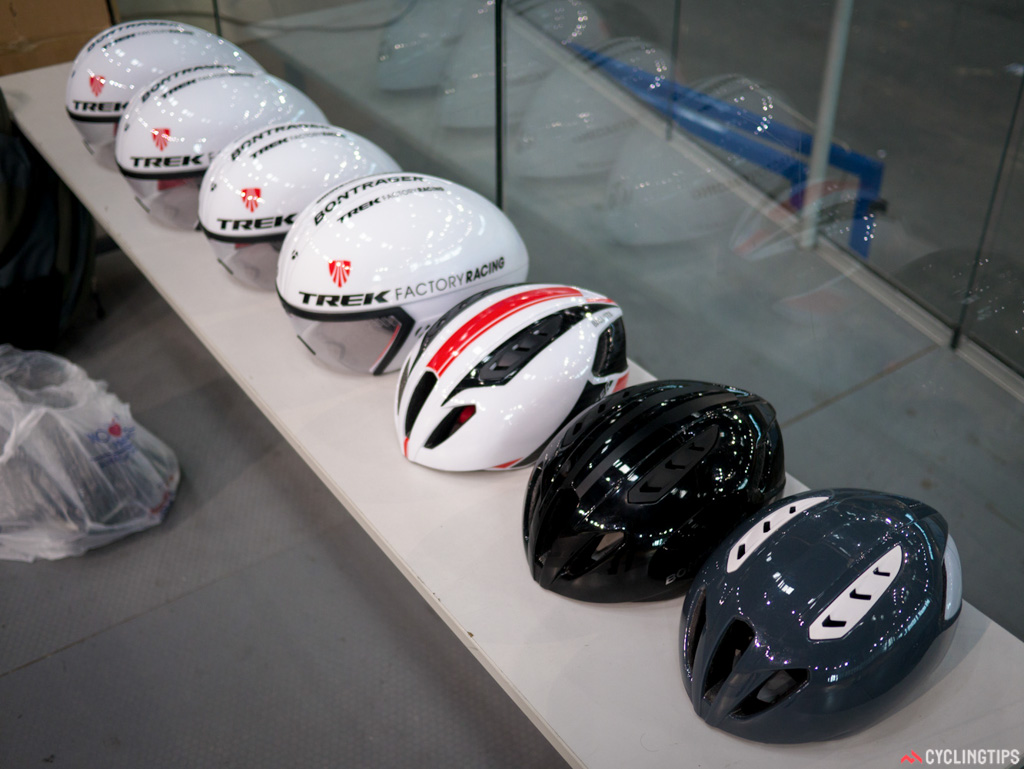
Each rider was set to hit the track six times, each time using a different bike set-up or position, from an out-and-out time trial position to a climbing position in the drops on their road bikes. Ten laps would be required each time to get the necessary data for the technicians to crunch and assess the results.
I was expecting a serious atmosphere, but this was soon squashed as Frank swept past me, rolling to a stop and joking (I think) “How’d I look? Ready for my hour record attempt?” The guys may have been there for business but the lighthearted atmosphere and banter between staff and riders ensured that the next few hours passed quickly.
To accomplish the job Trek partnered with two separate software companies. The first of these was Alphamantis Technologies, a Montreal-based company that specialises in aerodynamic positioning of riders. To get the exact information that Trek wanted from Alphamantis’ software they had also added some proprietary adjustments to the software and testing procedures.
I asked Jordan about the team’s partnership with Alphamantis.
“Essentially Alphamantis is a program that takes the power data, heart rate and speed of a rider and then communicates with a device called a WASP that gives us all the ANT+ data in real time,” Jordan said.
“The Alphamantis program then takes this data on a lap-by-lap basis and translates this into a rolling resistance and a drag figure. What we essentially get is a rider’s CdA (drag area) value [which] in layman’s terms, is what defines a rider’s aerodynamics. We then use this CdA value to compare each position and run from a rider.”
This information was only the first step of the process for the day’s data gathering and crunching. Once the team of technicians had this information they then used a second piece of software, Best Bike Split.

Best Bike Split is a simulation program, an online tool that’s freely available but that Trek had tweaked slightly for their purposes.
“By taking the CdA values from today’s test and plugging them into the program we can accurately estimate a rider’s time for a chosen course,” Jordan said. “We take the rider and bike weight, overall aerodynamics, including the bike and equipment aerodynamic properties plus the rider power profiles (what the riders should realistically be capable of achieving).
“The software has multiple courses already programmed in or we can take GPS and mapping data with elevation and use this to create our own courses, even including weather conditions. We can change frames, wheels, multiple perimeters to see how the timing on the simulated course changes.”
So far so good. Even for me and my old-school take on cycling I could see that the process had its merits — the team would use the data they collected in the velodrome then apply it to a model of the Col d’Eze course. But why a velodrome and not a wind tunnel? Surely a wind tunnel would be a much more precise and controlled environment for testing?
“Most wind tunnels aren’t set up for cycling and the ones that are equipped for cycling are quite rare, especially in Europe,” Jordan said. “Historically we used to use a tunnel in Magny-Cours near Nevers in central France. It’s a good wind tunnel just difficult to get to with riders. We also used one in San Diego, California, but as the riders weren’t in the States that often, it wasn’t ideal.”
So Jordan and Trek looked for a better solution, which happened to be Alphamantis.
“We had been doing some of our own internal projects to initiate a similar type of software, but we found that [Alphamantis] was already a powerful program so we partnered with them,” Jordan said. “The same goes for Best Bike Splits who we partnered with last year.
“This is the first time that we are testing like this; we’re pretty confident that we are the only team doing it to this level at the moment.”
It’s obvious that it’s not just the bosses at Trek that see value in the velodrome session. Everyone seems exceptionally keen on generating results and information that can be used later on in the year. While each rider is on the track, the others are either quizzing the technicians, the helmet designers or chatting to the mechanic about bike position and kit.
Each time Frank Schleck completed a run he’d be engrossed by the data on the laptop. Over with the helmet guys, Bob Jungels spent time discussing new developments and whether it would be possible to build certain items for him. From the looks of both David and Ivan they didn’t seem sure that Bob was fully clued up on how difficult it is to produce a helmet, even if it is for a pro.
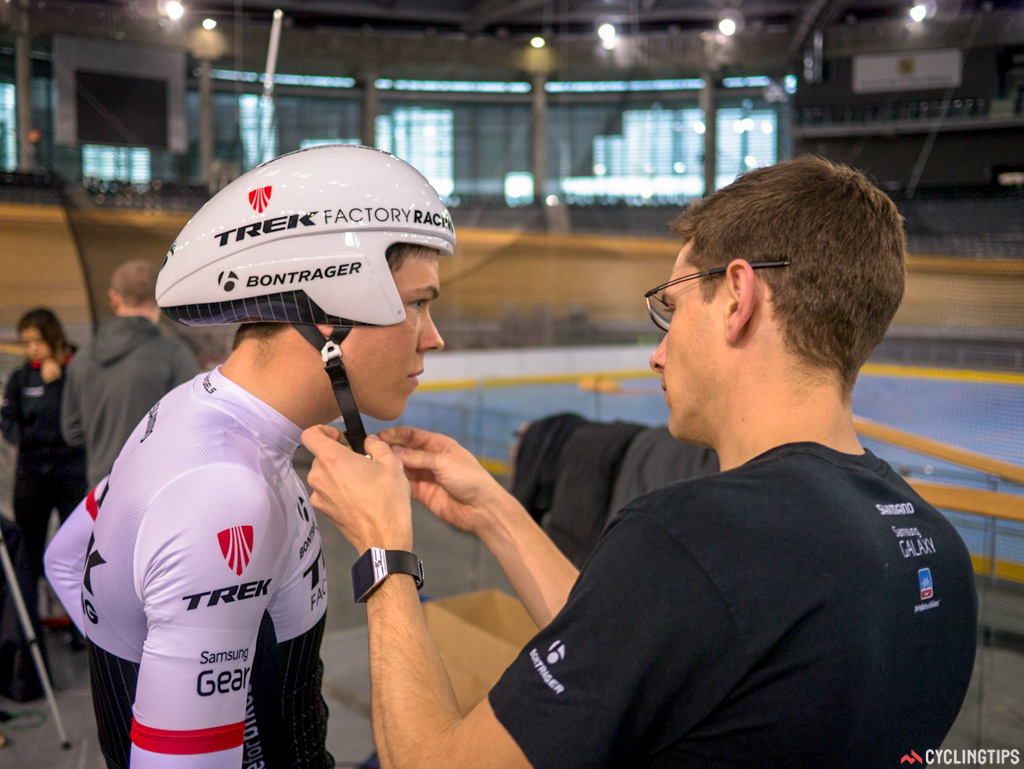
I asked Frank about days such as these. Being a pro for the past 13 years he must have attended dozens of tests like this; days spent on tracks and in wind tunnels. So does it still interest him after all these years?
“I believe it’s very interesting, you need to be open to things. You train hard because you want to be the fastest and this is part of it,” Frank said. “I like doing stuff like this, especially when it’s a rainy day.
“With Trek being the owner they have much more interest in days like this. They want as much data as we do. As a company they never seem to stand still; [they’re] always pushing forward. It’s not always easy for a rider to spend time doing days like this, or helping with development. I could be in the whirlpool or on the PlayStation now!
“Seriously though, it can be a little hard, but the results and development we get out of it is worth it.”
Bob Jungels and Riccardo Zoidl look unnaturally perfect on a time trial bike. Their backs are as flat as a dining room table and with about as much body movement as one too, their legs silkily putting the power down. Jordan commented that it’s a pleasure to see them in action and I had to agree.
For Austrian national road race champion Riccardo Zoidl, it’s only the second time he’s ever been on a velodrome. Chatting with him he seems to have a little bit of trepidation about the idea of venturing on to the track but within a lap you wouldn’t guess that he’s nervous; he’s shooting around the velodrome comfortably and looking like someone who’s very at home on the boards.
Off the track, I ask his views on the day’s testing.
“I trust the guys 100%. It’s maybe just small things we are testing today but those small things can make a huge difference,” Riccardo said. “Especially for the uphill TT like the one in Paris-Nice. It’s worth doing tests like this when you can save the amount of time we expect to.”
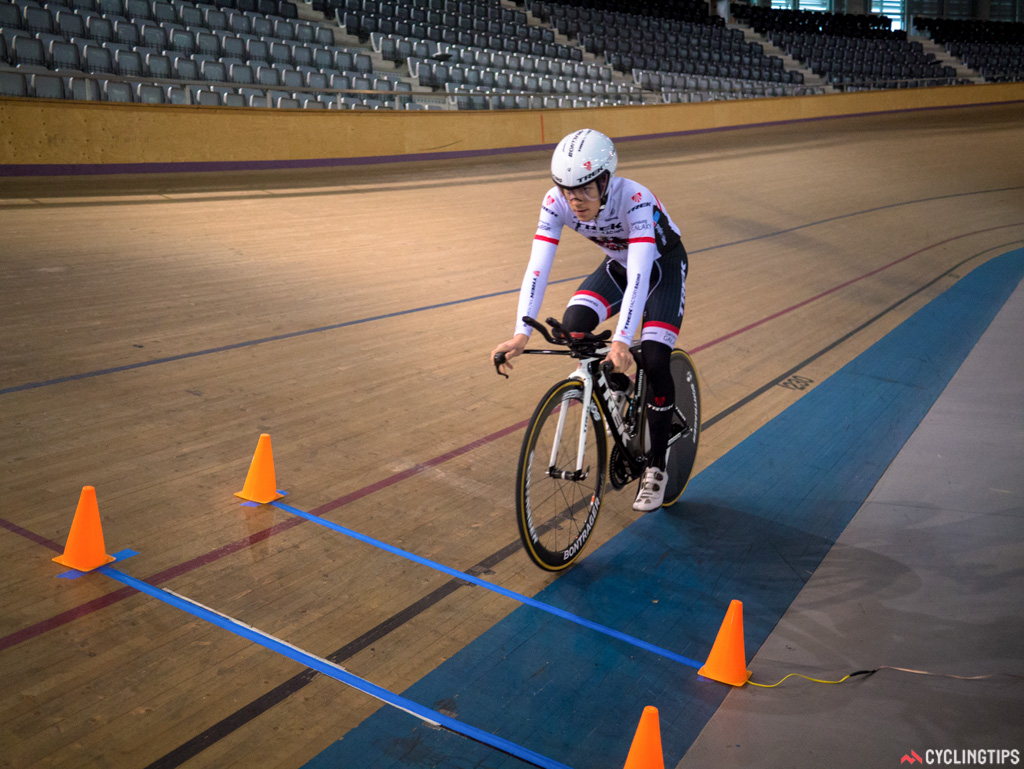
With the day’s successful testing done it’s now up to Jordan and the rest of the technicians at the team to dissect the results and decide what setup the guys will be best-served to use come March 15. Jordan makes one last valuable point.
“The primary benefit is not solely that they will go faster”, he said. “[It’s] that they will go into the race with the confidence that they have the perfect equipment for the course and conditions.”
Things are quickly cleared away, cables wrapped up, sensors safely stored and laptops packed away. For Frank, Riccardo and Bob, they may have clocked up 60 plus laps on the velodrome, but that doesn’t count as training to them. Instead Riccardo takes off on his own, wrapping himself in Bontrager’s new wet weather Hell Shell jacket, dashing out the velodrome doors wanting to get a few hours training on the slippy wet roads around Palma.
Frank and Bob decide to keep dry and soon they’re tucked in behind a derny smoothly swinging off and cranking up the speed on the boards.
As with many things in life there are things that crop up in cycling and scupper even the best-laid plans. At the opening stage of the recent Ruta del Sol a crash resulted in Frank Schleck sustaining a deep muscular injury in his quadricep. At first it seemed as if there was going to be enough time for a full recovery but it wasn’t to be. Frank and the team came to the conclusion that it was best for him to not start Paris-Nice.
On the flip side Bob Jungels is having a storming season so far, with an ITT stage win and the overall at Etoile de Bessèges plus 10th overall at the Ruta del Sol. He could be a man to watch come the final time trial up the Col d’Eze on Sunday.
And as for the bikes and helmets he and Riccardo Zoidl will be using for that stage, Trek has kept that pretty quiet. For what it’s worth, Richie Porte was on a standard road bike with TT bar clip-ons, an aero helmet and a skinsuit when he won the stage in 2013, as too was Bradley Wiggins when he won the year before. We’ll have to wait and see what Trek and the riders decide on for this Sunday’s race.
